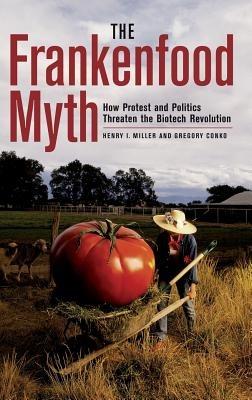L’articolo è stato aggiunto alla lista dei desideri
IBS.it, l'altro eCommerce
The Frankenfood Myth: How Protest and Politics Threaten the Biotech Revolution
Cliccando su “Conferma” dichiari che il contenuto da te inserito è conforme alle Condizioni Generali d’Uso del Sito ed alle Linee Guida sui Contenuti Vietati. Puoi rileggere e modificare e successivamente confermare il tuo contenuto. Tra poche ore lo troverai online (in caso contrario verifica la conformità del contenuto alle policy del Sito).
Grazie per la tua recensione!
Tra poche ore la vedrai online (in caso contrario verifica la conformità del testo alle nostre linee guida). Dopo la pubblicazione per te +4 punti
Altre offerte vendute e spedite dai nostri venditori



Tutti i formati ed edizioni
Few topics have inspired as much international furor and misinformation as the development and distribution of genetically altered foods. For thousands of years, farmers have bred crops for their resistance to disease, productivity, and nutritional value; and over the past century, scientists have used increasingly more sophisticated methods for modifying them at the genetic level. But only since the 1970s have advances in biotechnology (or gene-splicing to be more precise) upped the ante, with the promise of dramatically improved agricultural products—and public resistance far out of synch with the potential risks. In this provocative and meticulously researched book, Henry Miller and Gregory Conko trace the origins of gene-splicing, its applications, and the backlash from consumer groups and government agencies against so-called Frankenfoods—from America to Zimbabwe. They explain how a happy conspiracy of anti-technology activism, bureaucratic over-reach, and business lobbying has resulted in a regulatory framework in which there is an inverse relationship between the degree of product risk and degree of regulatory scrutiny. The net result, they argue, is a combination of public confusion, political manipulation, ill-conceived regulation (from such agencies as the USDA, EPA, and FDA), and ultimately, the obstruction of one of the safest and most promising technologies ever developed—with profoundly negative consequences for the environment and starving people around the world. The authors go on to suggest a way to emerge from this morass, proposing a variety of business and policy reforms that can unlock the potential of this cutting-edge science, while ensuring appropriate safeguards and moving environmentally friendly products into the hands of farmers and consumers. This book is guaranteed to fuel the ongoing debate over the future of biotech and its cultural, economic, and political implications.
L'articolo è stato aggiunto al carrello
Le schede prodotto sono aggiornate in conformità al Regolamento UE 988/2023. Laddove ci fossero taluni dati non disponibili per ragioni indipendenti da IBS, vi informiamo che stiamo compiendo ogni ragionevole sforzo per inserirli. Vi invitiamo a controllare periodicamente il sito www.ibs.it per eventuali novità e aggiornamenti.
Per le vendite di prodotti da terze parti, ciascun venditore si assume la piena e diretta responsabilità per la commercializzazione del prodotto e per la sua conformità al Regolamento UE 988/2023, nonché alle normative nazionali ed europee vigenti.
Per informazioni sulla sicurezza dei prodotti, contattare productsafetyibs@feltrinelli.it
L’articolo è stato aggiunto alla lista dei desideri


